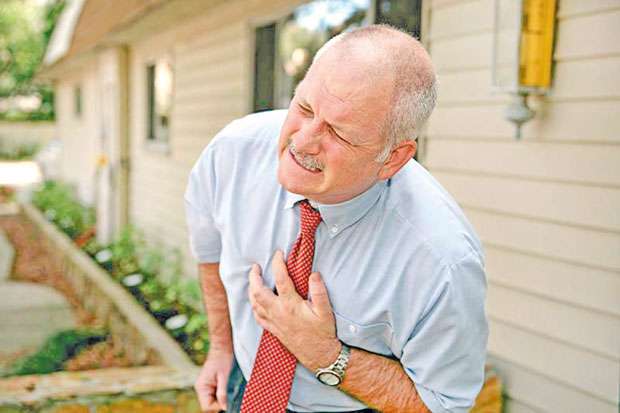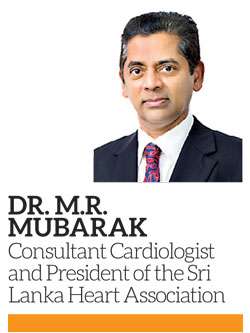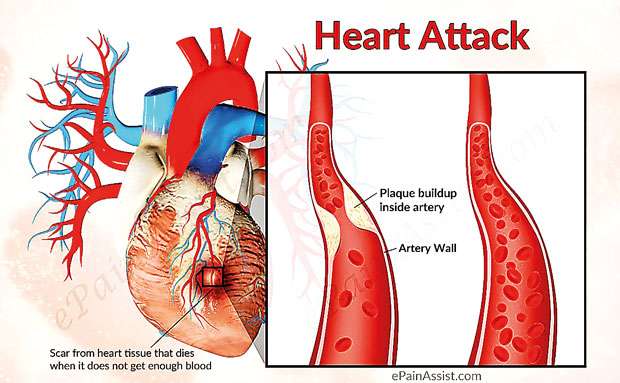Reply To:
Name - Reply Comment

 Juggling between work, family and personal life? Well, it may be a daily struggle for some with added amounts of stress. Stress accompanies unhealthy changes in lifestyle, leading to many complications in relation to your health. Stress-eating, smoking and alcohol may be possible alternatives to de-stress, but they would definitely put your life at risk. As such, an unhealthy diet, a sedentary lifestyle and smoking have been identified as three contributors to heart disease. Heart diseases are a common cause of deaths among people across the world and it has been found that more changes in lifestyle are direct risk factors. Hence, in view of World Heart Day, which falls tomorrow (September 29), the Health Capsule spoke with Dr. M.R Mubarak, Consultant Cardiologist and President of Sri Lanka Heart Association (SLHA) to help shed light on coronary artery diseases and activities done by the SLHA.
Juggling between work, family and personal life? Well, it may be a daily struggle for some with added amounts of stress. Stress accompanies unhealthy changes in lifestyle, leading to many complications in relation to your health. Stress-eating, smoking and alcohol may be possible alternatives to de-stress, but they would definitely put your life at risk. As such, an unhealthy diet, a sedentary lifestyle and smoking have been identified as three contributors to heart disease. Heart diseases are a common cause of deaths among people across the world and it has been found that more changes in lifestyle are direct risk factors. Hence, in view of World Heart Day, which falls tomorrow (September 29), the Health Capsule spoke with Dr. M.R Mubarak, Consultant Cardiologist and President of Sri Lanka Heart Association (SLHA) to help shed light on coronary artery diseases and activities done by the SLHA.
What are Coronary Artery Diseases?
“Coronary Artery Diseases (CAD) are caused due to cholesterol deposits in the coronary arteries,” Dr. Mubarak said in his opening remarks. “These deposits block the arteries resulting in a myocardial infarction or a heart attack. It is a disease prevalent all over the world and occurs in relation to age. When you grow old, cholesterol naturally deposits in the arteries. But at present, what we are worried about are cases that contribute to premature coronary artery disease. This is a new trend where people between 35-40 years of age also suffer heart attacks. As such this disease is associated with the younger generation due to changes in lifestyle. Diet, exercise, level of stress, smoking and alcohol intake are immediate contributors.”the doctor said.
According to him, 1/3rd of deaths that occur in the world are due to cardiovascular diseases including heart attacks and strokes. This means heart attacks are the main cause of 17 million deaths that occur annually. “In Sri Lanka we do not have exact figures, but we generally know that out of the deaths recorded daily 20-25% of them happen due to heart attacks. And 80% of these deaths could be prevented by controlling the risk factors,” he added.
Coronary Artery Diseases (CAD) are caused due to cholesterol deposits in the coronary arteries. These deposits block the arteries resulting in a myocardial infarction or a heart attack. It is a disease prevalent all over the world and occurs in relation to age
Risk factors 
The risk factors for CAD have been known for years, but still we are lagging behind when controlling them. The most common risk factors include :
Hypertension : This should be detected and treated and this is why we encourage people representing the younger ages to check whether their blood pressure is high. People usually have a belief that they will check blood pressure only if they develop a headache or feel dizzy. But it should be checked regularly since such changes occur silently in most instances.
Diabetes : People know the symptoms of high blood sugar levels hence they need to be aware and get regular checkups. If the sugar level is high patients are advised as to how they could control the diet and do exercises. In extreme cases they are given pills or insulin.
High cholesterol : This also could be detected by doing a blood test. Just because a person is fat it doesn’t mean that he or she would have high cholesterol levels in their blood. Sometimes there are slim people who have high amounts of cholesterol. Hence, individual appearance cannot be used as a mode to detect whether a person has cholesterol. The total cholesterol count should be kept below 200 at all times.
The above three risk factors are disease-related and in addition to that many other risk factors occur due to a person’s lifestyle. These include :
Smoking : This is a major risk factor as it could increase a person’s risk of developing a heart attack, by many folds.
Diet : It is important to avoid fats and lipids and opt for natural fibres and nutrients. Therefore it is recommended that people eat more fruits and vegetables. They should cut down on animal fats and carbohydrates as well.
Sedentary lifestyles : People are always seated. Even in an office they tend to be less active and they don’t even use the stairs at times. People wait for the lift even to get to the first floor. Therefore it is recommended that people do some kind of activity for 30 minutes, five days a week.
Obesity : This is where a person’s body weight is disproportionately high in relation to the height.
Stress : This includes work, job and family stress.
Symptoms
Some of the common heart attack signs and symptoms include :
Diagnosis and treatments
“Once a person suffers a heart attack it is important to seek medical help immediately,” Dr. Mubarak continued. “Usually people take tablets and waste time. But what should happen is that the patient should be rushed to hospital. Once the patient relates the incident the surgeon will conduct an ECG. A special blood test called a Troponin Test is done to help in the diagnosis. Wasting time means you are wasting your heart muscle. A heart attack is where one of the arteries gets blocked 100% which results in the adjacent area not getting a blood supply. In such situation the heart muscle starts dying. At the hospital once a heart attack is diagnosed, people are sent for treatment. If the facilities are available the patient will be taken to the CAD lab. There an angiogram will be done to find the place of the clot using a wire or balloon. After this test, stent is put in the artery. After this operation blood flow will be restored. But if these facilities are not available there will be a delay in the cure. In that case there are clot-dissolving medicines called Thrombolytic medications which are administered through a vein. Here the blood clot dissolves and other medicines are given including a high dose of Aspirin,”he went on to explain. Recovery takes some time and according to Dr. Mubarak, getting treatments sometimes is a lifelong process. “After a person suffers a heart attack, he or she should regularly check the pressure, sugar and other risk factors which have been mentioned already. Some treatments will continue for a year. Afterwards they need to get back to their normal lives. Taking preventive medicines is important. The first attack comes with an unforgettable pain. They have an inherent feeling that they are going to die. Therefore, secondary prevention is also important because a person has already suffered one attack and there are possibilities for another since the risk factors are already the in the body,”explained
Dr. Mubarak.

World Heart Day 2018
This year’s theme for ‘World Heart Day’ is ‘Make a Promise for my heart, your heart and all our hearts’. The three promises are to eat healthily, to be active and to stop smoking. The Sri Lanka Heart Association (SLHA) is a member of the World Heart Federation, which is represented by nearly 200 organisations in 100 countries. “When it comes to SLHA it is an important organisation since its member-base includes cardiologists, cardiac surgeons and everybody involved in treating heart diseases,” Dr. Mubarak added. “We participate in the World Heart Day and its main aim is to prevent heart diseases rather than looking at treating the diseases,”he affirmed.
In view of the World Heart Day the SLHA has organised a walk on Sunday (September 30) from BMICH to Lanka Hospital. According to Dr. Mubarak, it will be a day full of educational activities, raising awareness on the three promises and how people should change their lifestyles accordingly. “Several entertainment items are also lined up to spread a message to the youth and children who are next in line and are vulnerable to develop heart diseases,” he added. “In addition to that certain health camps and check-ups will be done to give an idea about what they should know about their body,”he concluded.